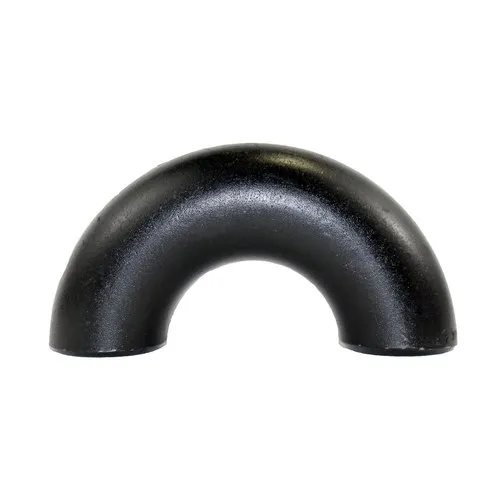-
Cangzhou Yulong Steel Co., Ltd.
-
Phone:
+86 13303177267 -
Email:
admin@ylsteelfittings.com
- English
- Arabic
- Italian
- Spanish
- Portuguese
- German
- kazakh
- Persian
- Greek
- French
- Russian
- Polish
- Thai
- Indonesian
- Vietnamese
- Zulu
- Korean
- Uzbek
- Hindi
- Serbian
- Malay
- Ukrainian
- Gujarati
- Haitian Creole
- hausa
- hawaiian
- Hebrew
- Miao
- Hungarian
- Icelandic
- igbo
- irish
- Japanese
- Javanese
- Kannada
- Khmer
- Rwandese
- Afrikaans
- Albanian
- Amharic
- Armenian
- Azerbaijani
- Basque
- Belarusian
- Bengali
- Bosnian
- Bulgarian
- Catalan
- Cebuano
- China
- China (Taiwan)
- Corsican
- Croatian
- Czech
- Danish
- Esperanto
- Estonian
- Finnish
- Frisian
- Galician
- Georgian
- Kurdish
- Kyrgyz
- Lao
- Latin
- Latvian
- Lithuanian
- Luxembourgish
- Macedonian
- Malgashi
- Malayalam
- Maltese
- Maori
- Marathi
- Mongolian
- Myanmar
- Nepali
- Norwegian
- Norwegian
- Occitan
- Pashto
- Dutch
- Punjabi
- Romanian
- Samoan
- Scottish Gaelic
- Sesotho
- Shona
- Sindhi
- Sinhala
- Slovak
- Slovenian
- Somali
- Sundanese
- Swahili
- Swedish
- Tagalog
- Tajik
- Tamil
- Tatar
- Telugu
- Turkish
- Turkmen
- Urdu
- Uighur
- Welsh
- Bantu
- Yiddish
- Yoruba

Aug . 12, 2024 20:02 Back to list
Understanding the Importance and Applications of Blind Flanges in Bi industries and Beyond
Understanding Blind Flanges A Key Component in Piping Systems
In the realm of industrial piping and construction, various components play critical roles in ensuring system efficiency and safety. One such component is the blind flange, often simply referred to as a blind. These flanges serve as essential fittings in piping systems, particularly for closing off ends of pipes, allowing for pressure retention and maintaining the integrity of the piping network.
What is a Blind Flange?
A blind flange is a type of flange that does not have a central opening. Unlike standard flanges, which facilitate the connection of two pipe ends, a blind flange is utilized to seal off a pipe system where no further connections are needed. This makes them invaluable in systems where future access points may be required but are not currently in use. Blind flanges are available in various sizes, shapes, and materials, enabling them to fit a wide range of applications and environments.
Applications of Blind Flanges
Blind flanges are commonly used in several industries, including oil and gas, water treatment, chemical processing, and power generation. In these sectors, blind flanges are utilized in various situations, such as
1. Sealing Pipe Ends When a section of a pipeline needs to be temporarily closed off for maintenance or inspection, blind flanges provide a reliable seal to prevent leaks and maintain pressure. 2. Testing and Inspection During hydrostatic testing of a pipe system, blind flanges are often used to seal off sections of the system, allowing for the assessment of its pressure retention capabilities.
3. Branch Connections In systems where future connections may be anticipated, blind flanges can be installed initially, then later removed when new branches are added without having to cut pipes.
4. Safety Applications In hazardous environments, blind flanges can serve as vital components in ensuring the safety of the system by preventing leaks of volatile substances.
Material and Design Considerations
bi blind flange

Blind flanges are manufactured from various materials, including carbon steel, stainless steel, and alloy materials, depending on the operational requirements. The choice of material impacts factors such as corrosion resistance, temperature tolerance, and mechanical strength.
Design considerations for blind flanges involve factors such as pressure rating, size, and compatibility with existing piping systems. These considerations ensure that the blind flange performs effectively under the specific conditions of the operational environment.
Advantages of Using Blind Flanges
1. Cost-Effective Blind flanges can reduce costs in maintenance and operation by providing a simple solution for sealing pipe ends without the need for complex fittings or additional connections.
2. Ease of Maintenance Since they can be easily removed and replaced, blind flanges facilitate convenient access to pipe systems for maintenance activities.
3. Versatility Available in a variety of configurations, blind flanges can be utilized in numerous applications, making them a versatile choice for engineers.
4. Pressure Retention By effectively sealing pipes, blind flanges play an essential role in maintaining system pressure, which is crucial for operational efficiency and safety.
Conclusion
Blind flanges may appear deceptively simple; however, they are critical components in many piping systems. Their applications in sealing, testing, and safety highlight their importance in industrial settings. By selecting the appropriate materials and designs for specific requirements, engineers can leverage the benefits of blind flanges to enhance the integrity and efficiency of their systems. As industries continue to evolve, the role of blind flanges will remain significant in ensuring safe and effective piping operations.
Latest news
-
ANSI 150P SS304 SO FLANGE
NewsFeb.14,2025
-
ASTM A333GR6 STEEL PIPE
NewsJan.20,2025
-
ANSI B16.5 WELDING NECK FLANGE
NewsJan.15,2026
-
ANSI B16.5 SLIP-ON FLANGE
NewsApr.19,2024
-
SABS 1123 FLANGE
NewsJan.15,2025
-
DIN86044 PLATE FLANGE
NewsApr.19,2024
-
DIN2527 BLIND FLANGE
NewsApr.12,2024
-
JIS B2311 Butt-Welding Fittings LR/SR 45°/90° /180°Seamless/Weld
NewsApr.23,2024











